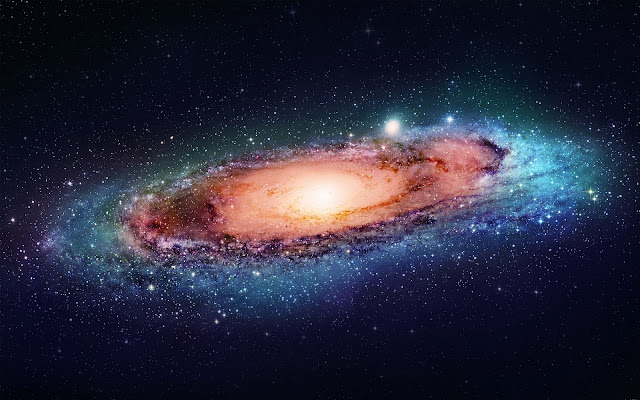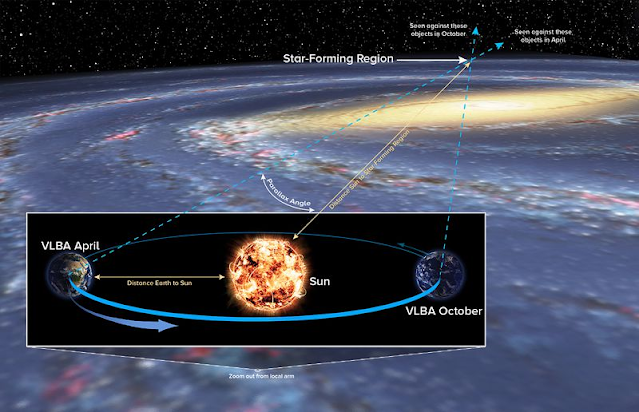BREAKING: The Far Side Of Our Galaxy Has Been “Seen” For The First Time
The adage “we can’t see the forest for the trees” is often used, yet the same may be said of “we can’t see the Milky Way for the stars.”
Recent work based on an ancient astronomy approach has filled in key details to the map of our own cosmic backyard, giving us a more precise knowledge of where objects are on the opposite side of the galaxy.
Even though the night sky may be familiar to you, it might be challenging to fully comprehend what our galaxy looks like from the outside due to its central location. It doesn’t help that it’s a flattened disc; the most we can do is figure out how to gauge the relative locations of stars and plot them on a 3D map.

But how can we determine a star’s distance? Because the sizes and luminosities of those glimmering nuclear furnaces vary greatly, astronomers are unable to estimate star distances from their brightness. Astronomers from the Max-Planck Institute for Radio Astronomy in Germany and the Harvard-Smithsonian Center for Astrophysics in the US employed a method that has been used in astronomy for almost 180 years to produce their record-breaking measurement.
The German astronomer Friedrich Bessel utilized stellar parallax for the first time to determine the distance to a star in the constellation Cygnus in 1838. Not bad for a person with a cheap telescope, good eyesight, and some deft trigonometry abilities; his estimation of 10.3 light years was approximately a light year off.
The fundamentals are simple: shut one eye while holding your forefinger up near to your face. After then, open it and shut the other.

The German astronomer Friedrich Bessel utilized stellar parallax for the first time to determine the distance to a star in the constellation Cygnus in 1838. Not bad for a person with a cheap telescope, good eyesight, and some deft trigonometry abilities; his estimation of 10.3 light years was approximately a light year off.
The fundamentals are simple: shut one eye while holding your forefinger up near to your face. After then, open it and shut the other.
With your finger held at a distance, repeat this. Depending on how far away your finger is from your face, you will notice an apparent shift in its location as you look at it with each eye. To see changes in a star that is far away, you would need your eyes to be fairly apart.
We fortunately receive exactly that when the Earth revolves around the Sun. It’s almost just over the cosmic back gate, twelve light years away. We need a telescope with a considerably finer focus so we can view more of the galaxy.
A little bit better results are achieved by Hubble’s wide field camera, although even it can only pinpoint the relative movement of a star’s location if it is within 10,000 light years. The diameter of our galaxy is thought to be five times larger.
With this most recent investigation, scientists were able to calculate the separation between Earth and a cluster of stars that is practically on the other side of the Milky Way, at a staggering distance of 66,000 light years. The previous record, set in 2013, of slightly over 36,000 light years, is nearly doubled by this.
The Very Long Baseline Array, a piece of equipment, was used to measure both of these distances (VLBA). To put it simply, the VLBA is made up of ten large antennas that are dispersed over thousands of kilometers between North America, Hawaii, and the Caribbean to form a single, enormous eye. This enables astronomers to spot a change in a star’s location on the Moon’s surface that is about the size of a baseball.
The observations were taken in 2014 and 2015, spotting light coming from an area of space where new stars were forming. They were able to shine through the dense layer of dust that obstructs much of the light because surrounding clouds of water and methanol molecules magnified their brightness over the enormous distance.
“Most of the stars and gas in our galaxy are within this newly-measured distance from the Sun. With the VLBA, we now have the capability to measure enough distances to accurately trace the galaxy’s spiral arms and learn their true shapes,” says researcher Alberto Sanna from the Max-Planck Institute for Radio Astronomy.
“This means that, using the VLBA, we now can accurately map the whole extent of our galaxy.” We shouldn’t hold our breath for an accurate Google Milky Way any time soon – the researchers estimate we’re still a decade off having a fairly complete picture.
Even so, a galaxy-sized selfie ought to be well worth the wait. This study was released in Science.
Via Sciencealert
Do not forget to share your opinion with us to provide you with the best posts !



0 Comments